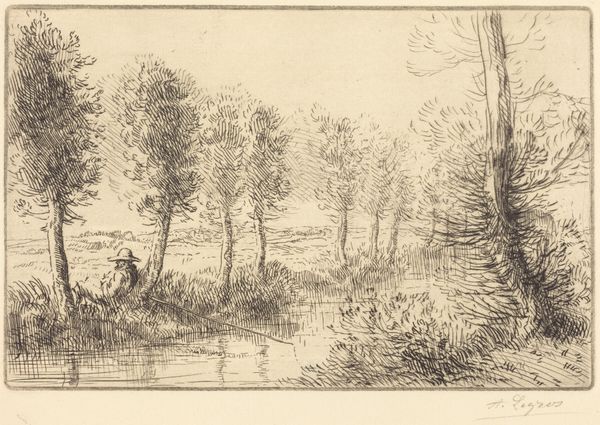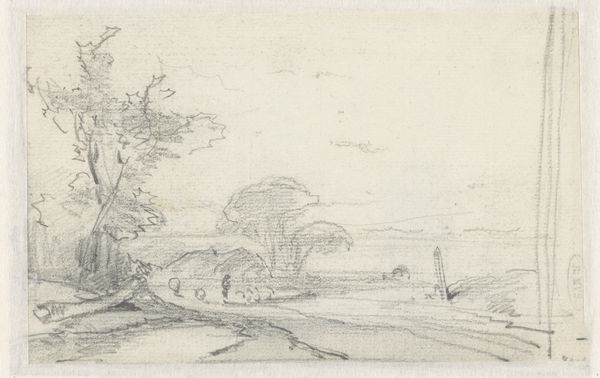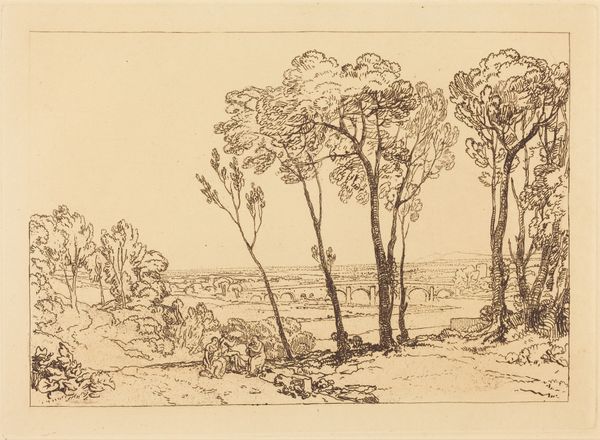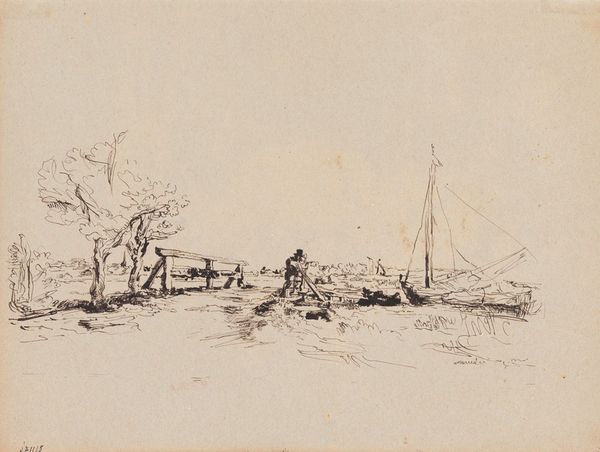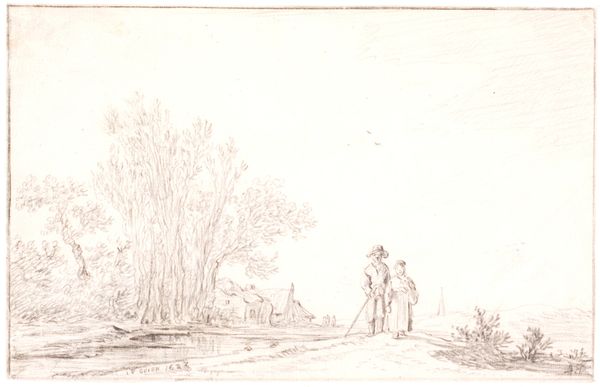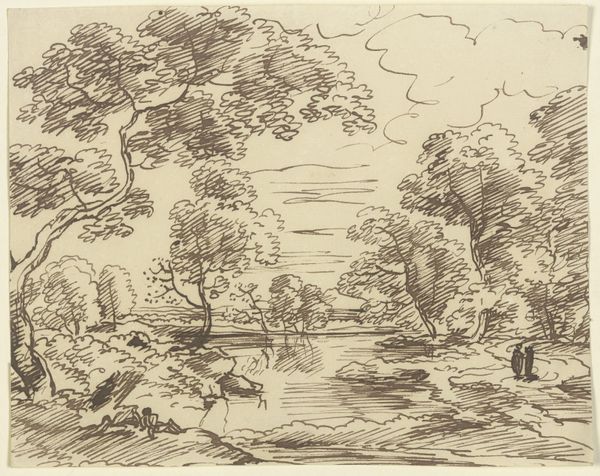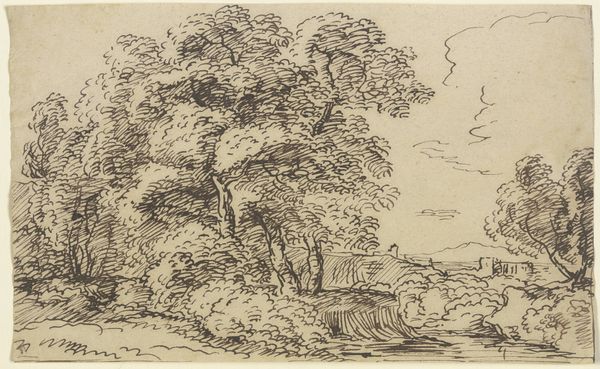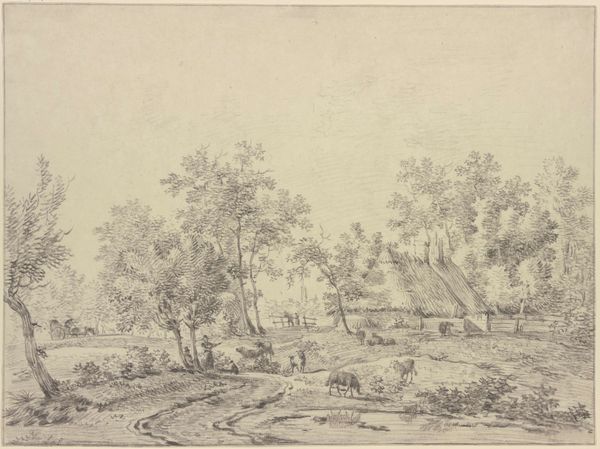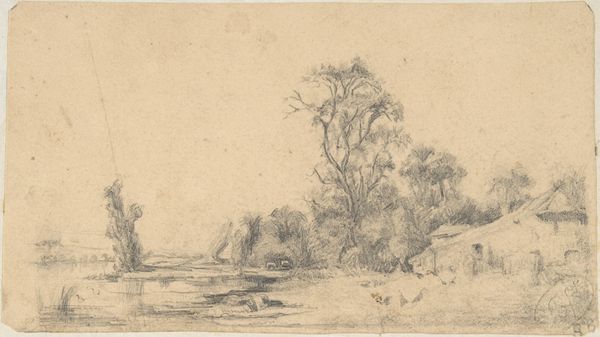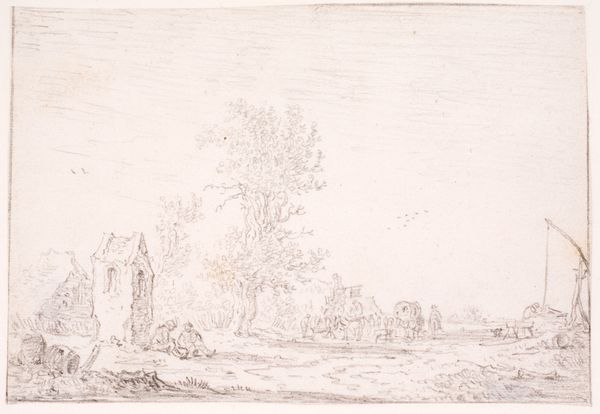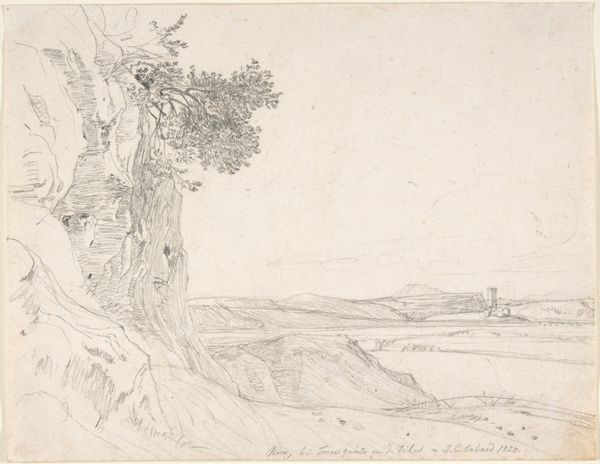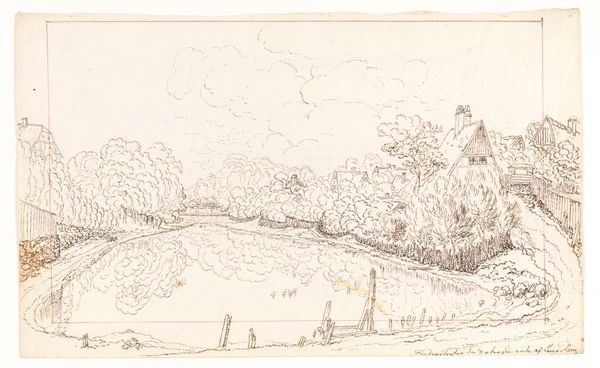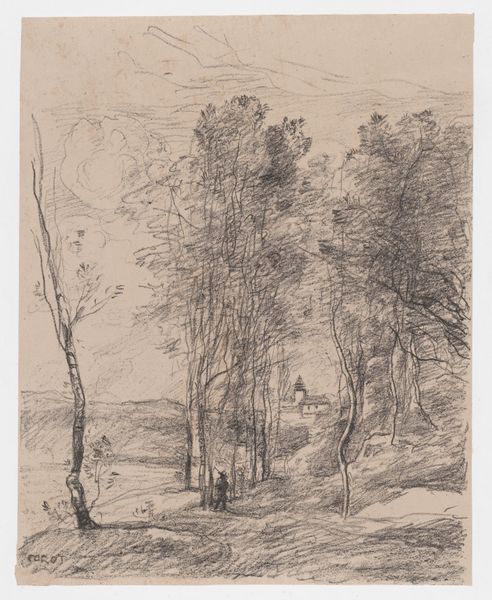
drawing
#
landscape illustration sketch
#
drawing
#
ink drawing
#
ink painting
#
pen sketch
#
etching
#
ink drawing experimentation
#
pen-ink sketch
#
botanical drawing
#
watercolour illustration
#
watercolor
Dimensions: 221 mm (height) x 335 mm (width) (bladmaal)
Curator: I'm immediately drawn to the sepia tones of this ink drawing; there's such warmth conveyed. What strikes you? Editor: There's an ethereal quality that the simple line work and the blank negative spaces evoke; it feels unfinished, yet incredibly whole in what it represents. Curator: Precisely. What we’re looking at here is "Bordeaux set fra floden" or "Bordeaux Seen from the River" a piece created with pen and ink back in 1659 by Bodan I. Currently it is housed right here at the SMK. Editor: The spire is quite striking, like a slender needle piercing the sky. I wonder what its symbolic role was to the residents of Bordeaux in the 17th century? A reach toward the heavens? A signal of power? Curator: That spire most certainly was a phallic representation of masculine authority during a period when women were denied their autonomy as a means to promote and control gendered norms, both on a symbolic and societal scale. Notice the working class in the foreground—they seem to struggle with tools; yet, the church dominates. This symbolizes the exploitation of marginalized members to enforce colonial objectives during that historical period. Editor: The very shape and verticality signal the gaze of authority. One is always beneath its watch, even while laboring. Though in general I understand that during this period there would also be a hope for trade and progress from those working families by river, but it might still symbolize authority, even then. I note, also, the clouds overhead—they’re shaped a bit like curls of wool, or perhaps more romantically, a sort of "cloud sheep." There are definitely biblical connotations to that. Curator: I cannot dismiss the socio-economic ramifications of it, with a bit of reach it could potentially show class stratification through architectural iconography, but yes! Biblical analogies in art are unavoidable—that said, it allows me to appreciate the rich tension and dialogue in how we might see through the canvas from different ideological lens. Editor: Absolutely, these symbols gain so much in resonance and strength over the years and the differing points of view help show it. Looking closely makes it more apparent to me—this sketch isn't merely topographical, it's imbued with meanings about ambition, labor, hope, faith and so many other themes of mankind. Curator: Indeed. To close, I can acknowledge how a work created centuries ago still fosters critical discourse now—we still contend with these thematic threads; some progress made, some still unravelling before our eyes. Editor: To echo that sentiment—a single drawing such as this holds a myriad of symbols, that’s something of great appeal to those of us searching for visual cues throughout human existence.
Comments
No comments
Be the first to comment and join the conversation on the ultimate creative platform.
